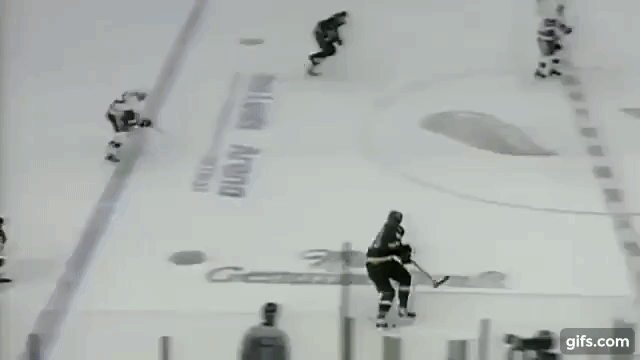Blast From The Past - Pavel Bure
What Players Can Learn From The Russian Rocket For Today's Hockey PT 1
One of the most ELECTRIFYING players in NHL history, Pavel Bure who was coined The Russian Rocket, was one of the greatest goal scorers in NHL history, primarily during the early ’90s and ending in the very early ’00s. While his career was cut extremely short due to knee injuries, Pavel left his mark on the game and future generations to come with numerous skills that were some of the highest in the league.
I myself grew up in the late ’90s a huge fan of Bure’s after seeing him in a few Don Cherry “Rock’em, Sock’em” hockey DVDs. I was also fortunate to see him playing every now and then on a game broadcasted on ESPN or ABC.
If you don’t know Pavel Bure, essentially he was a right-winger born in Russia, at the time the USSR, in 1971. He was being groomed with Sergei Fedorov and Alexander Mogilny to take over for the famous K-L-M line while they played behind the Iron Curtain. His draft story is one of the best to ever be told from that era which you can read about here, but Pavel played 12 years in the NHL and scored 437 goals in 702 games.
Bure had an arsenal of skills he used throughout his career that we could easily pick out that would translate to today’s game such as his hard and accurate shot, quick release, shifty stickhandling ability, and one helluva devastating elbow (right Churla?).
But what I really want to focus on with this Bure piece was his ability to generate speed, primarily from linear acceleration.
I’ve told the story before, but I think one of the reasons I really got my paid start in hockey was because I was able to discuss the mechanics of Pavel Bure’s stride; especially the theory that he started his on the outside edge of his skates.
But Pavel wasn’t just known as the “Russian Rocket” because of his shot, but it was also the speed of the game that he played at as if he was just shot out of a cannon and going from 0-100mph (or what kilometers that would be for our Canadian friends) in an instant.
Let’s check out the clips below:
In the above gif, that’s a young Bure making a young Future Hall Of Famer Nick Lidstrom flail his stick and lose his balance in the process of being roasted. I count a total of 5 quick crossovers from the redline till Pavel is past Lidstrom. Pavel is able to get Lidstrom to bite on him going up the middle (as he’s angling himself towards that lane) and once Nick over commits just enough, Pavel taps the puck to his right under the sweep check by Lidstrom and does 2 quick, but powerful linear cross overs to blow right past him.
Does the above look familiar?
How about here where Pavel takes 6 crossover steps and splits the Boston defense, one of whom is another Hall Of Famer Ray Bourque. The fact that he was able to still maintain possession of the puck is unreal. Watch as he goes from the right boards - which causes Bourque to try and gap up and instead goes outside the dot lane until Pavel has blown by him - and keep possession through the middle of the ice.
And our last one here is on a power-play rush. Bure (#10) comes in on the right side of the gif and the Canucks defenseman essentially just leaves the puck in front for Pavel to pick up and just watches him go. Look at the lateral crossovers to start the video as he comes in to pick up speed, and then the linear crossovers through the neutral zone. Becomes he’s coming in with that speed as well as dictating where to go attack in open ice, he’s able to catch the entire Jets defense flat-footed and tossing up a prayer swinging their sticks at the puck.
I feel like I’ve seen this more recently?
So how do you as a coach or player develop and apply linear (and even lateral) acceleration to today’s game? It’s become quite the buzzword amongst the skills training business as well as coaches alike.
I’m not going to hit you up with all the proper terms of the body (though you can read a fantastic series by Josh Mallory here or you can check out Greg Revak’s article on Hockey Arsenal ). But I will tell you that some of the key parts to this skill are:
Ability to manipulate all of your edges, primarily your outside edge.
Proper Weight Shift
Crossing over with full extension (your underfoot)
Balance
Agility
Stay tuned for part 2 where we go over specifically what can be done to train and work on this.









